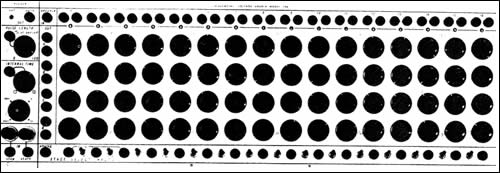◊ Historic Buchla Modules
Buchla pages > Buchla 200 modules > 246 Sequential Voltage Source
Buchla pages > Buchla 200 modules > 246 Sequential Voltage Source

The Sequential Voltage Source is an analogue memory for storing and retrieving control voltages. It includes an electronically separate pulse generator with voltage controlled period and pulse length (duty cycle).
The Model 246 produces up to 16 programmed voltages at each of four outputs.
The Sequencer employs three methods of selecting stages; pulse advancing, analogue selection, and pulse selection. All can be used simultaneously or in any desired combination.
Pulse advancing is used for generating sequences of control voltages. A pulse derived from the self contained pulser or from an external source advances the sequencer one step. sequencers may be cyclic over a number of stages or may be single shot, beginning and ending on any desired stage. Sequence boundaries are established by switches located between stages.
An analogue select input permits the value of an applied control voltage to determine the activated stage. Higher voltages select higher numbered stages; zero volts enables the pulse advance and pulse select inputs. Analog selection is particularly useful for converting a continuous voltage (from an envelope Generator or detector or a random voltage source) into a series of pre selected values (a 12 tone scale for example). It also enables indirect addressing by another sequencer and facilitates simple (one patchcord) extension of the Model 217 Keyboard's number of programmable outputs to 5.
The sequencer may be employed as a preset controller (a random access memory), with pre selected parameter values recalled by applying a pulse to the input of the desired stage. This pulse selection, used in conjunction with pulse advancing, allows several transient or cyclic sequences (different rhythms, for example) to be simultaneously programmed. A desired program might be initiated by pulses from a keyboard or another sequencer.
Light emitters and pulse outputs are energized as corresponding stages are actuated. The period of the self contained, voltage controlled pulser has a range of .005 to 10 seconds. Pulse width can be varied from 1% to 100% of the period.